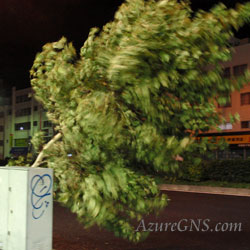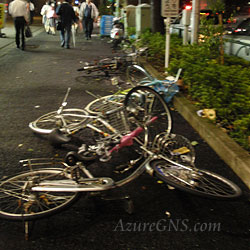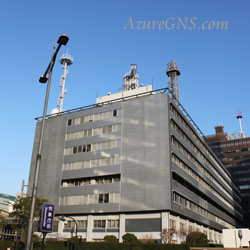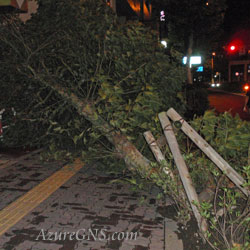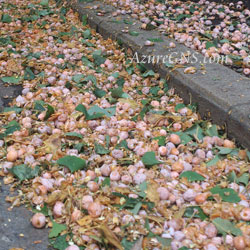(8月から10月まで)
TAIFU-NO-KISETSU
The Typhoon Season
(from Augsut to October)
●台風
typhoon
●台風の目
eye of a typhoon
●台風圏
typhoon area
●台風情報
typhoon warning
●熱帯低気圧
tropical cyclone; tropical depression
●最大風速
maximum sustained winds
●ハリケーン
hurricane
●サイクロン
cyclone
●気象庁
Japan Meteorological Agency
●防災対策
disaster prevention measures
●防災計画
disaster prevention plan; (万一の場合)代替 [防災] 計画 contingency plan
●避難命令
evacuation order
●避難場所;避難所
disaster shelter
●避難訓練
evacuation drill; fire drill
●避難する
(to) take refuge; (to) evacuate
●天災
natural disaster
●防災用品
emergency supplies
●非常持ち出し袋
emergency kit
●懐中電気
flashlight
●ろうそく
candle
●ラジオ
radio
●飲料水
drinking water
●缶詰
canned food
◆カリブ海、メキシコ湾、北大西洋西部、北太平洋東部で発生する熱帯低気圧をハリケーンと呼びます。
A tropical depression, which occurs in the Caribbean Sea, the Gulf of Mexico, the Western part of the North Pacific Ocean, or the Eastern part of the North Pacific Ocean, is called a hurricane.
◆インド洋に発生する熱帯低気圧をサイクロンと呼び、5月と10月に多発します。
A tropical depression, which occurs in the Indian Ocean mainly in May and October, is called a cyclone.
◆一方、台風は北西太平洋と南シナ海で8月から10月にかけて発生します。
In the meantime, typhoons break out in the North Pacific Ocean and the South China Sea from August to October.
◆年平均27個発生して、平均11個が日本に接近します。
27 typhoons occur each year on average, and 11 typhoons come to Japan on average.
◆台風は中心付近の最大風速が毎秒17.2メートル以上の熱帯低気圧です。
A typhoon is a tropical cyclone with maximum sustained winds of more than 17.3 meters per second at its center.
◆最大風速が毎秒17.2メートル以下のものは弱い熱帯低気圧です。
If maximum sustained winds are less than 17.2 meters per second, it is a tropical depression.
◆台風は上空の風や地球の自転の影響で一般的に北西へ進路をとります。
A typhoon usually takes a course to the northwest under the influence of the winds far up in the sky and the rotation of the earth.
◆台風が発生すると気象庁が台風に関するさまざまな情報を発表して、各マスメディアが報道します。
Once a typhoon occurs, the Japan Meteorological Agency releases various pieces of information about the typhoon through the mass media.
◆米国ではハリケーンを人名で呼びますが、日本では台風を番号で呼びます。
In the USA, a hurricane is called by a person’s name; however, in Japan a typhoon is called by a number.
◆気象庁は毎年、最も早く発生した台風を1号として、発生順に番号を付けています。
The Japan Meteorological Agency names the first typhoon in the year “Typhoon No 1”, and names the following typhoons in numerical order.
◆日本が第二次世界大戦に敗戦後、米軍の占領かで、アメリカ本国に倣って、台風に女性の名前が付けられていました。
Typhoons had women’s names following the American way, under American occupation for several years, after Japan was defeated in World War Ⅱ
◆特に規模が大きく、被害が大きかったものは、たとえば1934年(昭和9年)の室戸台風や、1959年(昭和34年)の伊勢湾台風などのように上陸地点などを命名されることもあります。
Some large-scale and devastating typhoons, such as the Muroto Typhoon in 1934 (Showa 9th yr) and Isewan Typhoon in 1959 (Showa 34th yr), are named after the places they struck.
◆台風の名前の由来はギリシャ語、中国語、沖縄(日本の最南端の県)の言語など諸説があります。
There are several views on the derivation of the word Typhoon; Greek, Chinese, or the language of Okinawa (the southernmost prefecture of Japan).
◆台風にともない強い風が吹き、大きな被害をもたらします。
A typhoon is accompanied by strong winds, and it causes extensive damage.
◆台風が通過すると風向きが反対の強い吹き返しが始まります。
Even after a typhoon passes, strong winds start blowing in the opposite direction.
◆台風は風と共に大雨ももたらします。
Besides fierce winds, typhoons can produce heavy rain.
◆土石流、がけ崩れ、河川の氾濫などにより毎年大きな被害が出ます。
Mud flows, landslides, and the overflowing of rivers cause significant damage every year.
◆海に近い地域では、高潮や高波に襲われる可能性があります。
Coastal regions can be struck by storm surges or high waves.
◆特に大潮の満潮時に台風が接近した時は特に注意をしなければいけません。
We have to take care in typhoons especially at full tide during the spring tide.
◆地球温暖化の影響で、台風は年々大規模になり、季節はずれの台風が日本を襲うこともあります。
Because of global warming, typhoons have become more and more large-scale year after year, and they sometimes hit Japan outside the regular season.
